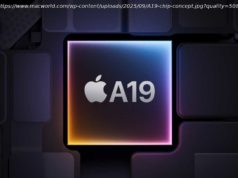Google research scientist Julian Kelly presented Google’s new quantum processor, dubbed Bristlecone, able to scale up to 72 qubits.
Google research scientist Julian Kelly presented Google’s new quantum processor, dubbed Bristlecone, able to scale up to 72 qubits.
Bristlecone aims to provide a testbed to further improve error rates and scalability of Google’s qubit technology, which was previously used to build a 9-qubit quantum system showing low error rates, says Kelly. Bristlecone leverages the same scheme for coupling, control, and readout as Google’s previous quantum processor but lays out its qubits in a square rather than a linear array. This is what allows to grow the number of qubits to 72, which is key to be able to demonstrate quantum supremacy, i.e., the ability of quantum computers to solve problems that state-of-the-art classical computers cannot.
According to Kelly, a member of Google’s Quantum A. I. group, quantum supremacy could be demonstrated using a 49-qubit quantum processor with a computational length of at least 40 and low enough error rates. Google is aiming for Bristlecone to improve on its previous 9-qubit system error rates and guarantee them across all of its 72 qubits. Although Kelly is optimistic as to Bristlecone being able to show quantum supremacy, no schedule is provided for that, nor for the availability of any actual hardware.
Other goals of Bristlecone are to investigate the use of surface code for error correction, and to make it possible to develop quantum algorithms using actual hardware. Additionally, Google is also targeting Bristlecone to applications in quantum simulation, optimization, and machine learning.
With Bristlecone, Google is joining the race to be the first to show quantum supremacy along with Microsoft, Intel, IBM, and others. Intel recently announced its plans to build a 49-qubit quantum processor based on its previous 17-qubit processor. IBM made available two 16 and 17 qubits processors last year and is also aiming at a 50-qubit system in the future. At the end of last year, Microsoft released an SDK for its quantum computing platform based on the idea of a topological qubit.
Kelly provided no details about the rest of Google’s quantum stack, including any software or language used to program the quantum device and its control system. InfoQ will promptly report on that as soon as new details are available.






